Denominations of current circuit breakers: how to choose the right automaton
Devices for disconnecting electricity during overloads and short circuits are installed at the entrance to any home network. It is necessary to correctly calculate the ratings of the current circuit breakers, otherwise their operation will be ineffective. Do you agree?
We will tell you how to calculate the parameters of the machine, according to which this protective device is selected. From the article we have proposed, you will learn how to choose the device required to protect the mains. Based on our advice, you will get an option that clearly works at a dangerous moment for posting.
The content of the article:
Circuit Breaker Parameters
To ensure the correct choice of the rating of the trip devices, an understanding of the principles of their operation, conditions and response time is necessary.
The operating parameters of circuit breakers are standardized by Russian and international regulatory documents.
Key elements and labeling
The circuit breaker includes two elements that respond to current exceeding the specified range of values:
- The bimetallic plate under the influence of the passing current heats up and, bending, presses on the pusher, which disconnects the contacts. This is “thermal protection” against overload.
- A solenoid, under the influence of a strong current in the winding, generates a magnetic field that presses the core, and the core is already acting on the plunger. This is a “current protection” against short circuit, which reacts to such an event much faster than the plate.
Types of electrical protection devices have a marking by which their main parameters can be determined.

The type of time-current characteristic depends on the setting range (the magnitude of the current at which the operation occurs) of the solenoid.To protect the wiring and appliances in apartments, houses and offices use switches type “C” or, much less common - “B”. There is no special difference between them in domestic use.
Type “D” is used in utility rooms or carpentry in the presence of equipment with electric motors, which have high starting power.
There are two standards for tripping devices: residential (EN 60898-1 or GOST R 50345) and more stringent industrial (EN 60947-2 or GOST R 50030.2). They differ slightly and machines of both standards can be used for residential premises.
According to the rated current, the standard range of machines for use in domestic conditions contains devices with the following values: 6, 8, 10, 13 (rare), 16, 20, 25, 32, 40, 50 and 63 A.
Time-current response characteristics
In order to determine the speed of operation of the machine during overload, there are special tables of the dependence of the shutdown time on the excess ratio, which is equal to the ratio of the current to the nominal current:
K = I / In.
A sharp break in the graph down when reaching a range factor of 5 to 10 units is due to the operation of the electromagnetic release. For type “B” circuit breakers, this occurs at a value of 3 to 5 units, and for type “D” circuit breakers, from 10 to 20.
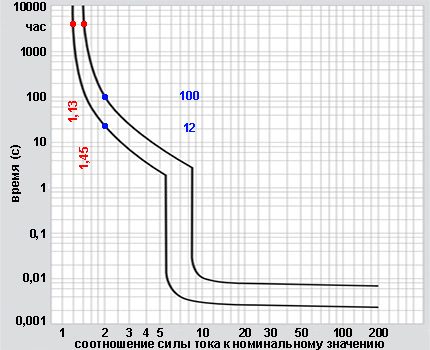
With K = 1.13, the machine is guaranteed not to turn off the line within 1 hour, and at K = 1.45, it is guaranteed to turn off during the same time. These values are approved in clause 8.6.2. GOST R 50345-2010.
To understand how long the protection will work, for example, at K = 2, it is necessary to draw a vertical line from this value. As a result, we get that, according to the above schedule, the shutdown will occur in the range from 12 to 100 seconds.
Such a large spread of time is due to the fact that the heating of the plate depends not only on the power of the current passing through it, but also on the parameters of the external environment. The higher the temperature, the faster the machine fires.
Denomination Rules
The geometry of the in-house and house electrical networks is individual, therefore, there are no standard solutions for installing circuit breakers of a certain rating. General rules for calculating the permissible parameters of automata are quite complex and depend on many factors. All of them must be taken into account, otherwise an emergency may be created.
The principle of intra-apartment wiring
Internal electrical networks have a branched structure in the form of a “tree” - a graph without cycles. Compliance with this construction principle is called machine selectivityaccording to which all types of electric circuits are equipped with protective devices.
This improves the stability of the system in the event of an emergency and simplifies the work to eliminate it. It is also much easier to distribute the load, connect energy-intensive devices and change the wiring configuration.
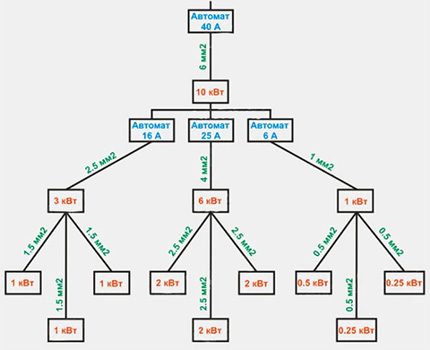
The functions of the introductory machine include monitoring of general overload - to prevent the current from exceeding the allowed value for the object. If this happens, there is a risk of damage to the external wiring. In addition, it is likely that protective devices outside the apartment, which already belong to the common house property or belong to local power grids, are likely to operate.
The functions of group machines include monitoring the current strength on individual lines. They protect the cable from the overloaded area and the group of electricity consumers connected to it from overload. If such a device does not work in the event of a short circuit, then the input circuit breaker insures it.
Even for apartments with a small number of electricity consumers, it is advisable to carry out a separate line for lighting. When you turn off the machine another circuit, the light does not go out, which will allow in more comfortable conditions to eliminate the problem. In almost every panel, the value of the value of the input automaton is less than the sum on the group ones.
The total power of electrical appliances
The maximum load on the circuit occurs when all electrical appliances are turned on at the same time. Therefore, usually, the total power is calculated by simple addition. However, in some cases this indicator will be less.
For some lines, the simultaneous operation of all electrical appliances connected to it is unlikely, and sometimes impossible. In homes, sometimes they specifically set restrictions on the operation of powerful devices. To do this, remember to prevent their simultaneous inclusion or use a limited number of outlets.

When electrifying office buildings, an empirical simultaneity factor is often used for calculations, the value of which is taken in the range from 0.6 to 0.8. The maximum load is calculated by multiplying the sum of the power of all electrical appliances by a factor.
There is one subtlety in the calculations - it is necessary to take into account the difference between the nominal (full) power and the consumed (active), which are related by the coefficient (cos (f)).
This means that for the operation of the device requires a current of power equal to consumed divided by this coefficient:
Ip = I / cos (f)
Where:
- Ip - rated current strength, which is used in load calculations;
- I is the strength of the current consumed by the device;
- cos (f) <= 1.
Typically, the rated current immediately or through an indication of the value of cos (f) is indicated in the technical certificate of the electrical device.
So, for example, the coefficient value for luminescent light sources is 0.9; for LED lamps - about 0.6; for ordinary incandescent lamps - 1. If the documentation is lost, but the power consumption of household devices is known, then for the guarantee they take cos (f) = 0.75.
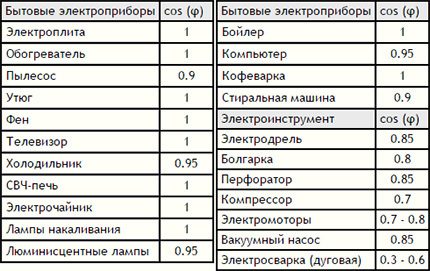
How to choose a circuit breaker according to the load power is written in next article, the contents of which we advise you to read.
Core section selection
Before laying the power cable from the distribution panel to a group of consumers, it is necessary to calculate the power of electrical appliances during their simultaneous operation. The cross section of any branch is selected according to the calculation tables depending on the type of metal wiring: copper or aluminum.
Wire manufacturers accompany their products with similar reference materials. If they are absent, then they are guided by the data from the directory "Rules for the design of electrical equipment" or produce cable cross section calculation.
However, often consumers are reinsured and choose not the minimum acceptable section, but one step more. So, for example, when buying a copper cable for a line of 5 kW, choose a cross section of 6 mm2when 4 mm is enough according to the table2.
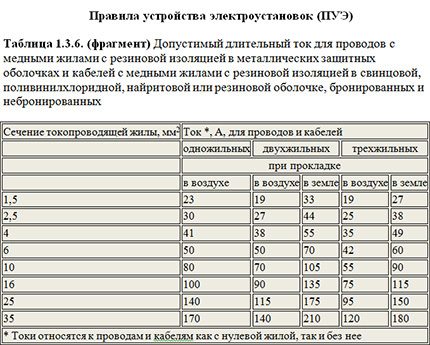
This is justified for the following reasons:
- Longer use of a thick cable, which is rarely subjected to the maximum permissible load for its cross section. Re-laying the wiring is not an easy and expensive job, especially if the room is being renovated.
- The bandwidth margin allows you to seamlessly connect new appliances to the network branch.So, in the kitchen you can add an additional freezer or move the washing machine from the bathroom there.
- The start of operation of devices containing electric motors gives strong starting currents. In this case, a voltage drop is observed, which is expressed not only in the flashing of the lighting lamps, but can also lead to breakdown of the electronic part of the computer, air conditioner or washing machine. The thicker the cable, the lower the voltage surge.
Unfortunately, there are many cables on the market that are not made according to GOST, but according to the requirements of various specifications.
Often, the cross section of their conductors does not meet the requirements or they are made of conductive material with greater resistance than expected. Therefore, the real ultimate power at which permissible heating of the cable occurs is less than in the normative tables.
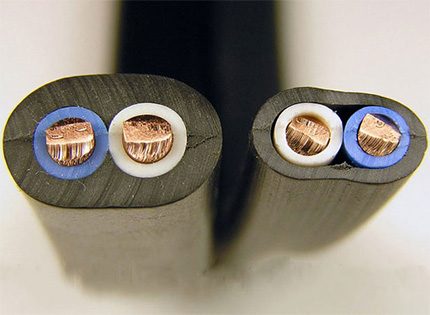
Calculation of circuit breaker rating for cable protection
The automatic machine installed in the shield must ensure that the line is switched off when the current power goes beyond the range allowed for the electric cable. Therefore, for the circuit breaker, it is necessary to calculate the maximum permissible rating.
According to the PUE, the permissible long-term load of copper cables laid in boxes or over the air (for example, over a stretch ceiling) is taken from the table above. These values are intended for emergencies when there is a power overload.
Some problems begin when correlating the rated power of the circuit breaker to the continuous allowable current, if this is done in accordance with the current GOST R 50571.4.43-2012.

First, the decryption of variable I is misleadingnas rated power, if you do not pay attention to Appendix “1” to this clause of GOST. Secondly, there is a typo in the formula “2”: the coefficient 1.45 is added incorrectly and this fact is noted by many experts.
According to clause 8.6.2.1. GOST R 50345-2010 for household circuit breakers with a rating of up to 63 A, the conditional time is 1 hour. The set trip current is equal to the nominal value multiplied by a coefficient of 1.45.
Thus, according to both the first and the modified second formulas, the rated current of the circuit breaker must be calculated by the following formula:
In <= IZ / 1,45
Where:
- In - rated current of the machine;
- IZ - continuous allowable cable current.
Let us calculate the ratings of the switches for standard cable cross-sections for a single-phase connection with two copper conductors (220 V). To do this, we divide the long permissible current (when laying through the air) by a trip coefficient of 1.45.
We choose an automaton so that its face value is less than this value:
- Cross section 1.5 mm2: 19 / 1.45 = 13.1. Rating: 13 A;
- 2.5 mm cross section2: 27 / 1.45 = 18.6. Rating: 16 A;
- 4.0 mm cross section2: 38 / 1.45 = 26.2. Rating: 25 A;
- 6.0 mm cross section2: 50 / 1.45 = 34.5. Rating: 32 A;
- Cross section 10.0 mm2: 70 / 1.45 = 48.3. Rating: 40 A;
- Cross section 16.0 mm2: 90 / 1.45 = 62.1. Rating: 50 A;
- Cross section 25.0 mm2: 115 / 1.45 = 79.3. Rating: 63 A.
13A circuit breakers are rarely sold, so devices with a rated power of 10A are more often used instead.
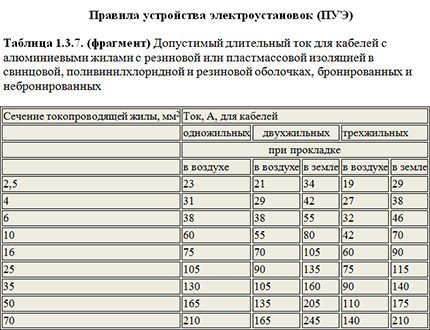
In a similar way for aluminum cables, we calculate the ratings of the machines:
- 2.5 mm cross section2: 21 / 1.45 = 14.5. Rating: 10 or 13 A;
- 4.0 mm cross section2: 29 / 1.45 = 20.0. Rating: 16 or 20 A;
- 6.0 mm cross section2: 38 / 1.45 = 26.2. Rating: 25 A;
- Cross section 10.0 mm2: 55 / 1.45 = 37.9. Rating: 32 A;
- Cross section 16.0 mm2: 70 / 1.45 = 48.3. Rating: 40 A;
- Cross section 25.0 mm2: 90 / 1.45 = 62.1. Rating: 50 A.
- Cross section 35.0 mm2: 105 / 1.45 = 72.4. Rating: 63 A.
If the manufacturer of the power cables declares a different dependence of the permissible power on the cross-sectional area, it is necessary to recalculate the value for the switches.
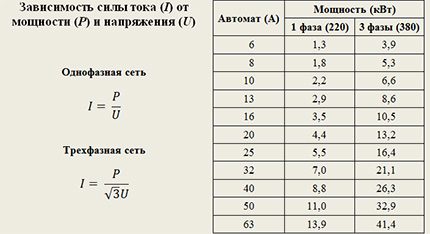
How to determine the technical parameters of a circuit breaker by marking, in detail set out here. We recommend that you familiarize yourself with the educational material.
Overload warning from consumer work
Sometimes an automatic machine with a rated power significantly lower than necessary for guaranteed maintenance of the operability of the electric cable is installed on the line.
It is advisable to reduce the rating of the switch if the total power of all devices in the circuit is much less than the cable can withstand. This happens if, for security reasons, when after installation of the wiring, some of the devices were removed from the line.
Then a decrease in the rated power of the machine is justified from the position of its faster response to emerging overloads.
For example, when the motor bearing is jammed, the current in the winding increases sharply, but not to short circuit values. If the machine responds quickly, the winding will not have time to melt, which will save the engine from an expensive rewinding procedure.
They also use a rating less than the calculated one due to severe restrictions on each circuit. For example, for a single-phase network, a 32 A switch is installed at the entrance to the apartment with an electric stove, which gives 32 * 1.13 * 220 = 8.0 kW of permissible power. Suppose that when wiring the apartment 3 lines were organized with the installation of group machines with a face value of 25 A.
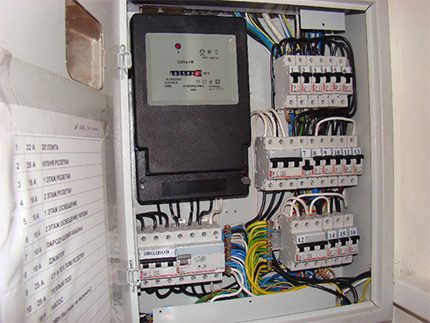
Suppose that one of the lines is slowly increasing load. When the power consumption reaches a value equal to the guaranteed tripping of the group switch, the remaining two sections will only (32 - 25) * 1.45 * 220 = 2.2 kW.
This is very small relative to total consumption. With this design of the distribution panel, the input circuit breaker will be more often disconnected than devices on the lines.
Therefore, in order to maintain the principle of selectivity, it is necessary to put on the circuit breakers with a rating of 20 or 16 amperes. Then, with the same distortion of the consumed power, the other two links will account for a total of 3.8 or 5.1 kW, which is acceptable.
Consider the opportunity circuit breaker installation with a rating of 20A on the example of a separate line dedicated to the kitchen.
The following electrical appliances are connected to it and can be simultaneously turned on:
- Refrigerator with a rated power of 400 W and a starting current of 1.2 kW;
- Two freezers with a power of 200 watts;
- Oven with a power of 3.5 kW;
- During the operation of the electric oven, it is allowed to additionally turn on only one appliance, the most powerful of which is an electric kettle, consuming 2.0 kW.
A twenty-ampere machine allows more than an hour to pass current with a power of 20 * 220 * 1.13 = 5.0 kW. A guaranteed shutdown in less than one hour will occur with a current pass of 20 * 220 * 1.45 = 6.4 kW.
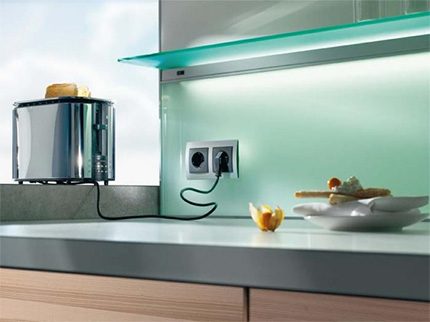
With the simultaneous inclusion of the oven and the electric kettle, the total power will be 5.5 kW or 1.25 parts of the nominal value of the machine. Since the kettle does not work for long, a shutdown will not occur. If at this moment the refrigerator and both freezers turn on, the power will be 6.3 kW or 1.43 parts of the nominal.
This value is already close to the guaranteed tripping parameter. However, the probability of such a situation is extremely small and the duration of the period will be insignificant, since the operating time of the motors and the kettle is small.
The starting current arising at the start of the refrigerator, even in the sum with all working devices, will not be enough for the electromagnetic release to trip. Thus, in the given conditions it is possible to use an automaton of 20 A.
The only caveat is the possibility of increasing the voltage to 230 V, which is allowed by regulatory documents. In particular, GOST 29322-2014 (IEC 60038: 2009) defines a standard voltage of 230 V with the possibility of using 220 V.
Now, in most networks, electricity is supplied with a voltage of 220 V. If the current parameter is reduced to the international standard 230 V, then you can recalculate the ratings in accordance with this value.
Conclusions and useful video on the topic
Switch device. Selection of an input automaton depending on the connected power. Power Distribution Rules:
Choosing a switch for cable bandwidth:
The calculation of the rated current of the circuit breaker is a complex task, for the solution of which it is necessary to take into account many conditions. Convenience of service and safety of the local power supply depend on the installed machine.
If in doubt about making the right choice, contact an experienced electrician.
Please write comments in the block below. Tell us about your experience in selecting circuit breakers. Share useful information and a photo on the topic of the article, ask questions.

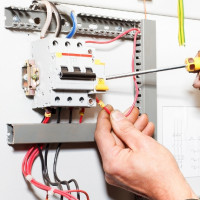 Marking circuit breakers: how to choose the right machine for wiring
Marking circuit breakers: how to choose the right machine for wiring 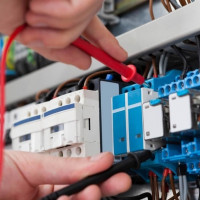 What is the selectivity of circuit breakers + principles of calculation of selectivity
What is the selectivity of circuit breakers + principles of calculation of selectivity 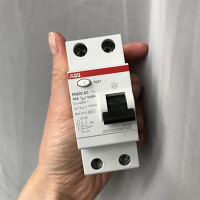 Machine selection by load power, cable cross-section and current: principles and formulas for calculations
Machine selection by load power, cable cross-section and current: principles and formulas for calculations 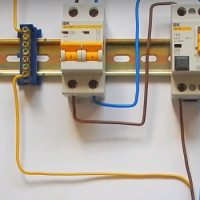 How to connect a differential machine: possible connection schemes + step-by-step instructions
How to connect a differential machine: possible connection schemes + step-by-step instructions 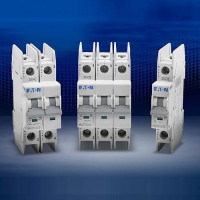 Choosing a circuit breaker: types and characteristics of automatic machines
Choosing a circuit breaker: types and characteristics of automatic machines 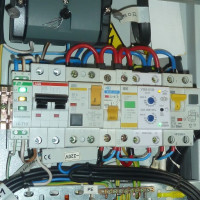 Fire RCD: selection recommendations, rules and installation diagrams
Fire RCD: selection recommendations, rules and installation diagrams  How much does it cost to connect gas to a private house: the price of organizing gas supply
How much does it cost to connect gas to a private house: the price of organizing gas supply  The best washing machines with dryer: model rating and customer tips
The best washing machines with dryer: model rating and customer tips  What is the color temperature of light and the nuances of choosing the temperature of the lamps to suit your needs
What is the color temperature of light and the nuances of choosing the temperature of the lamps to suit your needs  Replacement of a geyser in an apartment: replacement paperwork + basic norms and requirements
Replacement of a geyser in an apartment: replacement paperwork + basic norms and requirements
In the search, I asked a question: Standard range of circuit breakers from 2A to 63A. The link was to your site. And you do not have this number!
In general, a good article, however, please delete or edit the second sentence in the following phrase: “To protect the wiring and appliances in apartments, houses and offices use switches of type“ C ”or, much less common -“ B ”. There is no particular difference between them in everyday use. ” - I can’t see him!
The difference between them is also very significant, especially for private residential buildings, where the resistance of the phase-zero circuit very often exceeds 2 Ohms. In this case, the expected current of a single-phase short circuit will be no more than 110 A, therefore, automatic machines of type “C” with a rating of 16 A and above will not work in a normalized time, which should be no more than 0.4 seconds! But automatic machines of type "B" with a rating of 16A and even 20 A will work! Now you understand what the difference is?
Of course, there is a difference between type B and C machines and it cannot be called insignificant. They differ among themselves in the instantaneous trip current. For clarity, I will attach detailed diagrams with these indicators of protective circuit breakers.
It should also be noted that there are two types of trip devices:
1. Electromagnetic;
2. Thermal (bimetal plate).
The electromagnetic release in a class B circuit breaker trips when the rated current is doubled in 0.015 seconds. The thermal release responds in 4-5 seconds. with a similar jump. Whereas on a Type C machine, an electromagnetic release trips when the rated current is five times higher in 0.022 seconds. A thermal release responds in 1.5 seconds. with a similar jump.
I also want to draw attention to the fact that the data may vary depending on temperature and current strength.